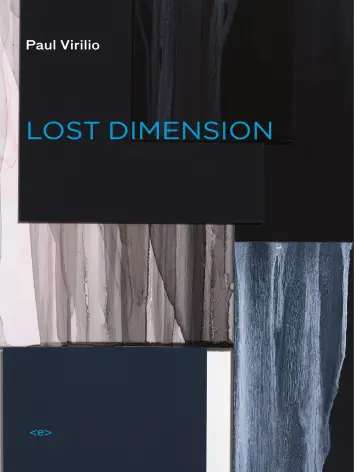A vision of the city as a web of interactive, informational networks that turn our world into a prison-house of illusory transcendence.
“Where does the city without gates begin? Perhaps inside that fugitive anxiety, that shudder that seizes the minds of those who, just returning from a long vacation, contemplate the imminent encounter with mounds of unwanted mail or with a house that’s been broken into and emptied of its contents. It begins with the urge to flee and escape for a second from an oppressive technological environment, to regain one’s senses and one’s sense of self.”
—from Lost Dimension
Originally written in French in 1983, Lost Dimension remains a cornerstone book in the work of Paul Virilio: the one most closely tied to his background as an urban planner and architect, and the one that most clearly anticipates the technologically wired urban space we live in today: a city of permanent transit and internalized borders, where time has overtaken space, and where telecommunications has replaced both our living and our working environments. We are living in the realm of the lost dimension, where the three-dimensional public square of our urban past has collapsed into the two-dimensional interface of the various screens that function as gateways to home, office, and public spaces, be they the flat-screen televisions on our walls, the computer screens on our desktops, or the smartphones in our pockets.
In this multidisciplinary tapestry of contemporary physics, architecture, aesthetic theory, and sociology, Virilio describes the effects of today’s hyperreality on our understanding of space. Having long since passed the opposition of city and country, and city and suburb, the speed-ridden city and space of today are an opposition between the nomadic and the sedentary: a web of interactive, informational networks that turn our world into a prison-house of illusory transcendence.






Reviews
There are no reviews yet.